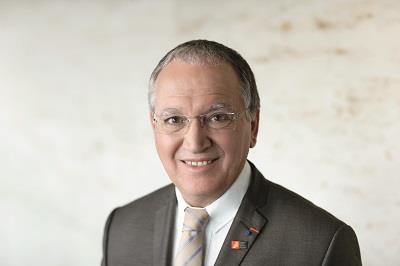In our fast-moving world, biotech is at the forefront of developments – but, by its very nature, it can provoke ethical and moral concerns.
The European Patent Office (EPO) has faced opposition in the past, for instance, over patents relating to processes for re-engineering genes, for use in medical research into cancer treatment. These processes could apply to various animals, including great apes – and that became a magnet for criticism from animal rights campaigners.
The number of patent filings for biotechnology increased by 0.3 percent in 2016, to 5,744 – making it the tenth largest sector in its field.
Youris.com spoke to Benoit Battistelli, President of the EPO, about the role of patent protection and how it can aid biotechnology innovation and the wider bioeconomy – despite the obstacles faced by some.

Benoit Battistelli - Courtesy of EPO
How much of a focus is the bioeconomy for patents and what are some of the key developments?
Biosciences play an important role in patent applications at the EPO, given the growing convergence of technologies, which is widely responsible for technical progress in a wide number of sectors. Such inventions are mainly found in industrial biotechnology, for instance, in the development of novel products such as new detergents, functional food or even new eco-friendly material in construction, such as pollution-eating concrete and self-healing concrete.
The area of clean energy production is also very important. For example, when it comes to using biomass as an energy source [editor’s note: In 2011, a Danish inventor won a European Inventor Award – organised by the EPO – for developing a system which increases the types of biomass fuels that can be used. Typically, biomass materials have to be dried before they can be used as fuel, but Jens Dall Bentzen’s furnace design can also burn materials with a moisture content of up to 60 percent. He’s since reported to have attracted interest from Europe and the US, selling the furnace to an American manufacturer, as well as building two others for use in Denmark].
Is the bioeconomy an increasing sector?
Biotech is among our top ten technical fields and it has increased. At the end of the patent granting process, it’s about 50 percent on average that become a patent. It’s only 26 or 27 percent in the case of biotech. Why? Because it is a very sensitive issue and we are applying the patentability criteria very rigorously. There are huge European capacities in biotech and we have seen that we must find a good balance between the regulatory constraints and the economic capacities that this sector represents.
The position of the EPO is very clear and simple. There is an EU directive concerning biotech, which we respect and which we have integrated in our own legal framework, the European Patent Convention. Then you have the interpretations of the Directive by the European Court of Justice and we adapt our practice to these judgements.
Overall, how complicated is it to obtain a patent, and is it expensive?
I would not say that it is complicated, but it is a difficult process, because we always start from the basis that a patent is an exception to the principle of free trade, free industry, free competition. Globally, for around 20 to 25,000 euros, you can obtain a patent as the EPO. For this amount, 5,000 euros are the EPO fees and the rest is the fees of those who helped to draft a patent and then discuss it with the patent office.
So, with a patent, you are giving the holder the exclusive right of commercially exploiting his invention, for a certain period of time, a maximum 20 years.
This article is part of the communication of the ProBIO project, a support action for KBBE projects which identifies research results to facilitate their uptake into the relevant sector.

youris.com provides its content to all media free of charge. We would appreciate if you could acknowledge youris.com as the source of the content.